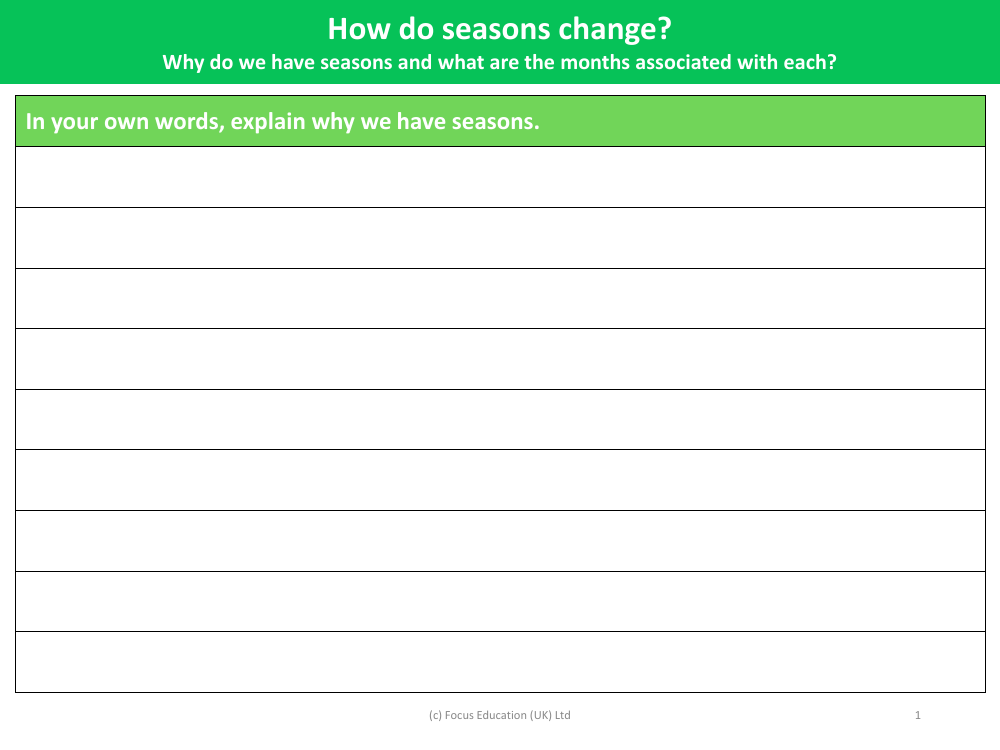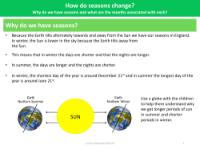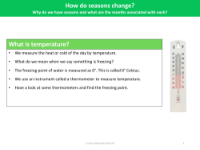Why do we have seasons? - Worksheet - Year 1

Science Resource Description
Seasons are a result of the Earth's tilt and its orbit around the Sun. The Earth is tilted on its axis at an angle of about 23.5 degrees. This tilt means that as the Earth orbits the Sun over the year, different parts of the Earth receive varying amounts of sunlight at different times. When the Northern Hemisphere is tilted towards the Sun, it experiences more direct sunlight and warmer temperatures, leading to the summer season. Conversely, when it is tilted away from the Sun, it receives less direct sunlight, resulting in colder temperatures and the winter season. The Southern Hemisphere experiences the opposite seasons at the same time.
The change of seasons is marked by the transition from winter to spring, spring to summer, summer to autumn, and autumn back to winter. Each season is typically associated with a set of three consecutive months. In many cultures, December, January, and February are considered the winter months; March, April, and May signify spring; June, July, and August are the summer months; and September, October, and November are associated with autumn. These seasonal divisions and their corresponding months can vary depending on geographical location and local climate patterns.







